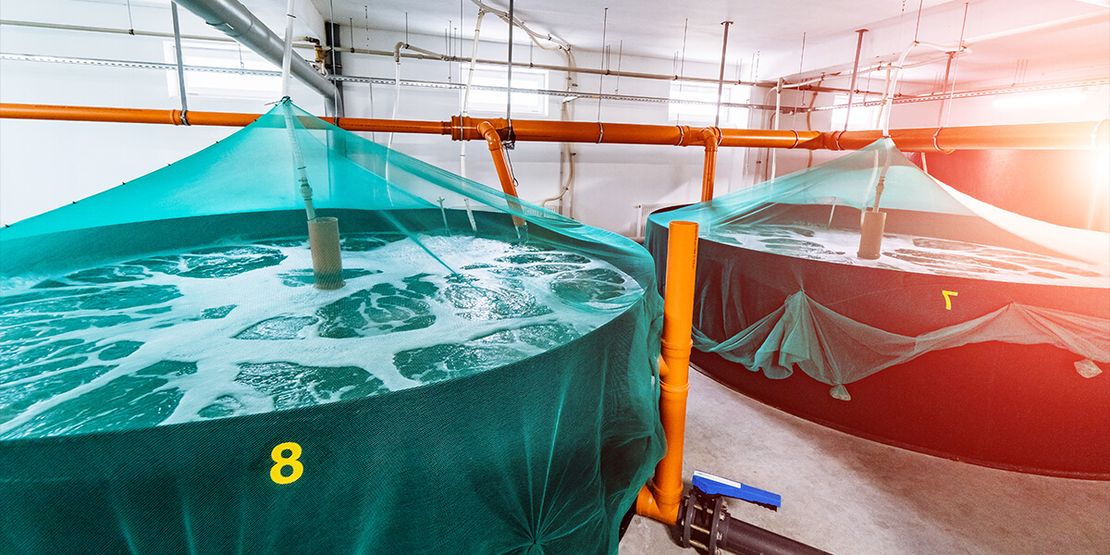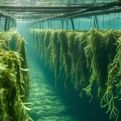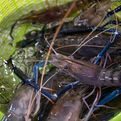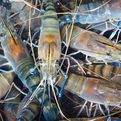Future of Shrimp Farming: Embracing Indoor Cultivation
Indoor shrimp farming, also known as recirculating aquaculture systems (RAS), has emerged as a promising solution to the environmental challenges plaguing traditional shrimp farming methods.
With its controlled environment and sustainable practices, indoor shrimp farming is poised to revolutionize the way shrimp are produced and consumed worldwide. Let's delve deeper into the significance and advantages of this innovative approach to shrimp cultivation.
Addressing Environmental Concerns
Traditional shrimp farming methods have long been associated with environmental degradation, including water contamination, destruction of mangrove forests, and the spread of diseases. Indoor shrimp farming offers a sustainable alternative by controlling all aspects of the shrimp's environment.
By utilizing recirculated water and implementing stringent water treatment measures, indoor farms minimize the risk of pollution and disease transmission, thus preserving delicate aquatic ecosystems.
Optimizing Environmental Control
One of the hallmark features of indoor shrimp farming is its ability to meticulously regulate environmental conditions. From temperature and salinity to pH levels and oxygenation, every aspect of the shrimp's habitat is carefully monitored and managed.
This precise control not only ensures optimal conditions for shrimp growth and health but also enables farmers to swiftly detect and address any potential disease outbreaks, safeguarding the welfare of their stock.
Economic Viability and Stability
Beyond its environmental benefits, indoor shrimp farming holds considerable economic advantages. By operating year-round irrespective of weather conditions, indoor farms provide a consistent and reliable supply of shrimp to meet the ever-growing global demand.
Moreover, the efficiency gains achieved through environmental control allow farmers to produce more shrimp in less time, enhancing profitability and ensuring long-term sustainability.
Promoting Sustainable Practices
Indoor shrimp farming facilitates the adoption of sustainable practices, such as the use of organic feed and reduced reliance on antibiotics. The controlled environment minimizes the need for chemical interventions, thereby mitigating the environmental impact associated with conventional shrimp farming.
By embracing sustainable principles, indoor farms not only protect the environment but also contribute to the production of healthier and more ethically sourced shrimp.
Pioneering a New Era in Shrimp Production
In conclusion, indoor shrimp farming represents a paradigm shift in the way shrimp are cultivated, offering a holistic approach that prioritizes environmental sustainability, economic viability, and ethical stewardship.
As the demand for shrimp continues to soar, indoor farming presents a viable solution to meet this demand while safeguarding our planet's precious natural resources. By embracing innovation and embracing sustainable practices, indoor shrimp farming heralds a new era of responsible aquaculture, ensuring a brighter and more sustainable future for generations to come.
Riley Sinclair (Digital Aqua Bear)
Hi! I'm Riley Sinclair (Digital Aqua Bear), and I'm exploring the world of digital aquaculture farms. Join me as I delve into innovative methods and sustainable practices for cultivating aquatic life in digital environments. Let's uncover the potential of digital aquaculture farms to revolutionize food production and environmental sustainability.
More From Digital Aqua Farm
Algae Bloom in Shrimp Farming: Strategies for Detection, Prevention, and Solution
Riley Sinclair (Digital Aqua Bear)
Shrimp Farming in Thailand: Navigating Challenges and Embracing Sustainability
Riley Sinclair (Digital Aqua Bear)
Maximizing Profitability: The Ultimate Smart IoT Controller for Shrimp Farmers
Riley Sinclair (Digital Aqua Bear)
Maximizing Shrimp Farming with Top IoT Systems: A Complete Review
Riley Sinclair (Digital Aqua Bear)
Blockchain's Impact on Shrimp Farming: Unlocking Transparency and Efficiency
Riley Sinclair (Digital Aqua Bear)
Global Shrimp Industry: Knowing the Key Players and Dynamics
Riley Sinclair (Digital Aqua Bear)









